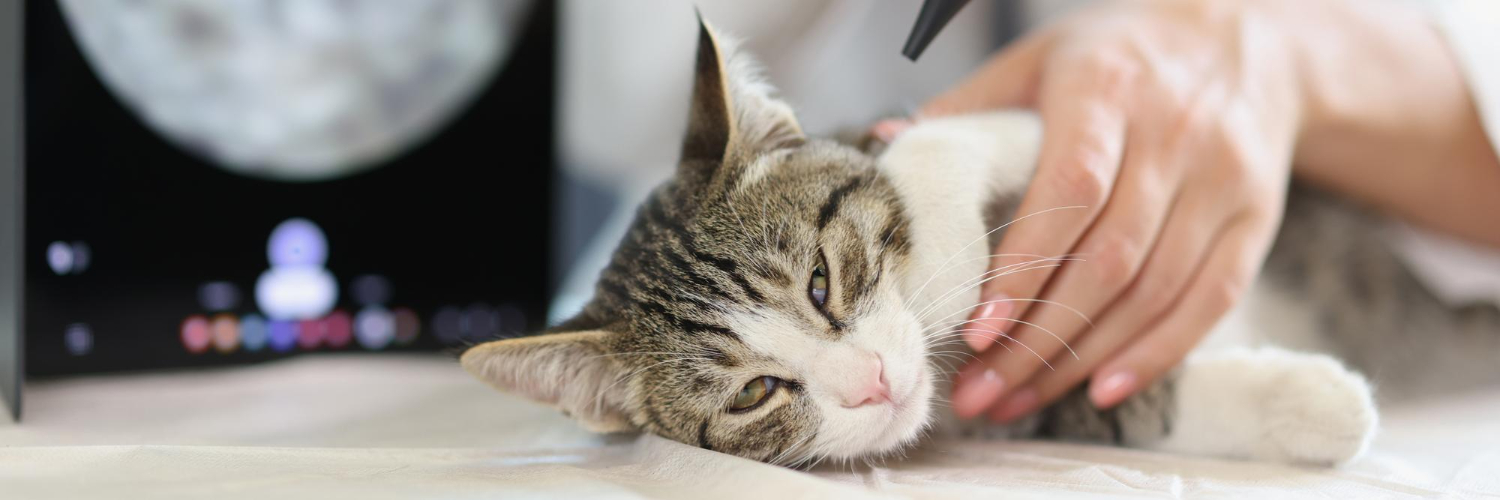Cats, beloved companions to millions, often enjoy close interactions with their owners, from playful cuddles to snuggly naps. While these interactions are what make us love cats most, they also present potentially dangerous opportunities for the transmission of pathogenic bacteria between humans and animals, a process known as zoonotic transmission. One bacterium of particular concern is Streptococcus canis (S. canis), a pathogen that has been linked to serious health issues in humans, such as endocarditis, necrotizing fasciitis, and septicemia, all potentially life-threatening conditions! Traditionally, S. canis has been associated with the mouths, ears, and rectums of cats, but new research has revealed that this bacterium can also colonize the skin, broadening the potential for zoonotic transmission.
Recently, our research team at MiDOG presented a study at an international conference in Vancouver investigating the presence of S. canis and other Streptococcus species on the skin microbiome of cats. By utilizing next-generation sequencing (NGS), we aimed to uncover how the bacterial landscape differed between cats in various health conditions and what implications these findings might have for veterinary care and pet owners.
Background on Streptococcus canis and Zoonotic Transmission
Streptococcus canis is a Gram-positive bacterium that belongs to the larger Streptococcus genus, known for its role in various infections in both animals and humans. In veterinary medicine, S. canis is most frequently associated with infections in dogs and cats, causing conditions such as wound infections, respiratory disease, and even fatal septicemia in severe cases. However, the zoonotic potential of S. canis makes it particularly noteworthy. Transmission from animals to humans typically occurs through direct contact, particularly when the skin barrier is broken, such as in the case of scratches, bites, or open wounds.
Until recently, the focus on S. canis zoonotic transmission centered on its presence in mucosal areas like the mouth and ears of cats. However, given that pet owners frequently handle their cats’ fur and skin, we felt it important to investigate whether S. canis also resides on the skin microbiome.
Aims of the Study
The primary objective of this study was to identify various Streptococcus species present in the skin microbiome of cats, using NGS technology. By comparing the skin microbiome of healthy cats to that of unhealthy cats with various diseases, the researchers aimed to determine whether certain Streptococcus species, particularly S. canis, were more prevalent in unhealthy cats. Given that unhealthy cats might be more prone to bacterial imbalances or infections, the study sought to establish whether these cats had a higher concentration of S. canis, which could, in turn, affect their ability to transmit this bacterium to humans.
Methodology
We tested the skin microbiome of 139 cats in total—69 healthy and 70 unhealthy. The next-generation sequencing (NGS) technology we use regularly at MiDOG Animal Diagnostics was employed as the primary method for identifying the bacterial species. NGS is a powerful molecular tool that allows researchers to sequence DNA from complex samples, such as skin microbiomes, with high precision. This technology has revolutionized microbiome studies, enabling the detection of numerous bacterial species simultaneously and down to specific strains, which is critical for understanding how these bacteria interact with their hosts.
To ensure that the most relevant bacterial species were analyzed, only Streptococcus species found in at least 10% of the total population were included. This criterion led to the identification of 13 Streptococcus species that were subjected to further statistical analysis. The relative abundance of each species between healthy and unhealthy cats was compared using the non-parametric Wilcoxon signed-rank test.
Our study yielded several important findings:
- Prevalence of Streptococcus canis among both healthy and unhealthy cats: Among all the Streptococcus species identified, S. canis had the highest relative abundance in both healthy and unhealthy cats. However, there was a striking difference in its concentration between the two groups. In healthy cats, S. canis represented only a relative mean of 0.22% ± 1.3% standard deviation of the total skin microbiome. In contrast, unhealthy cats exhibited a significantly higher abundance of S. canis, accounting for a relative mean of 6.69% ± 24.22% standard deviation. This difference was statistically significant (P=0.027), highlighting a potential link between feline health status and the overgrowth of S. canis.
- Differences in Other Streptococcus Species: In addition to S. canis, three other Streptococcus species were found to be significantly more abundant in healthy cats. These included Streptococcus minor (P=0.017), Streptococcus mitis-oralis-pneumoniae (P=0.034), and an unidentified Streptococcus species (P=0.029). The higher prevalence of these species in healthy cats suggests that they may play a role in maintaining a balanced skin microbiome, potentially acting as protective agents against the overgrowth of pathogenic bacteria like S. canis.
- First Identification of S. canis on the Skin: Perhaps the most significant conclusion of this study is that it marks the first time S. canis has been identified as part of the skin microbiome in cats. This finding expands the understanding of where S. canis can colonize and brings about new questions about the role the skin plays in zoonotic transmission.
Implications for Veterinary Care and Pet Owners
For veterinarians and pet owners alike, these findings have important implications. The presence of S. canis on the skin, especially in unhealthy cats, suggests that pet owners who frequently handle their cats—particularly if their pets are ill—should be aware of the potential for transmission through direct skin contact. Owners with compromised immune systems, open wounds, or underlying health conditions should take extra precautions, including proper hand hygiene and possibly wearing gloves when treating or handling sick cats.
Veterinary professionals should consider including skin as part of the diagnostic workup for cats suspected of harboring S. canis, particularly if the animal is showing signs of illness. This expanded understanding of the skin microbiome can also lead to better strategies for managing infections in cats, potentially reducing the risk of zoonotic transmission.
Categories: Cats, Next-Gen DNA Sequencing Technology, Pet Health, Safety and Wellness, Pet Parents, Skin Health, Zoonotic Infections

